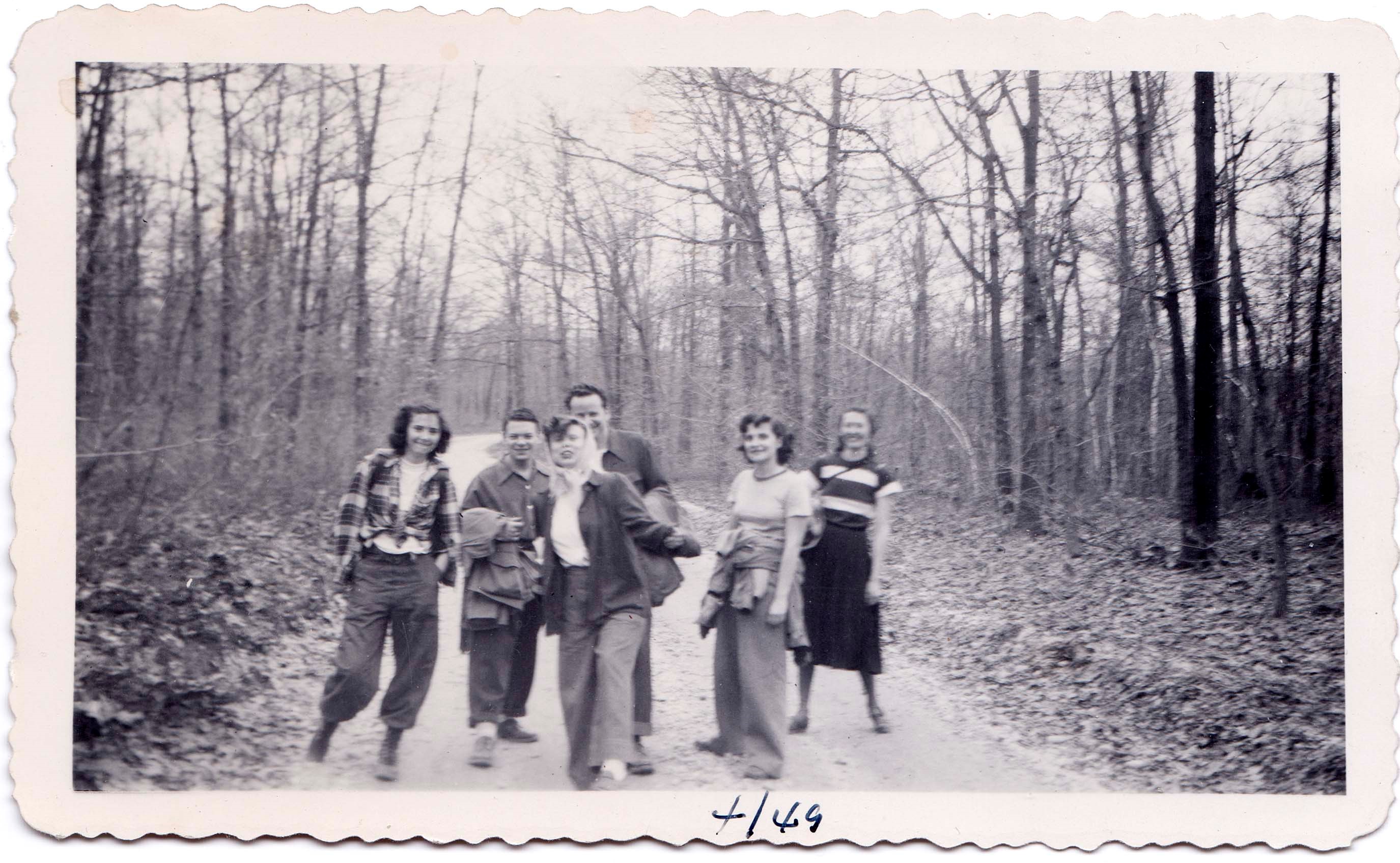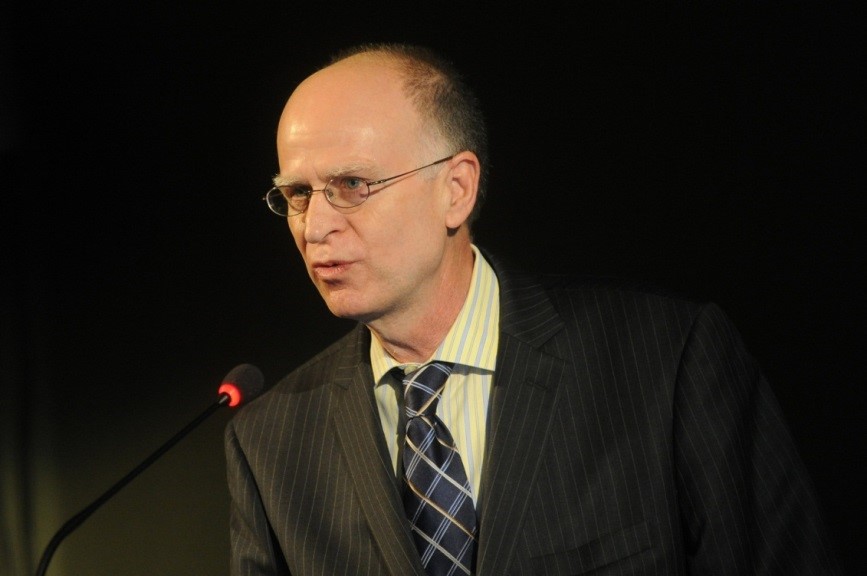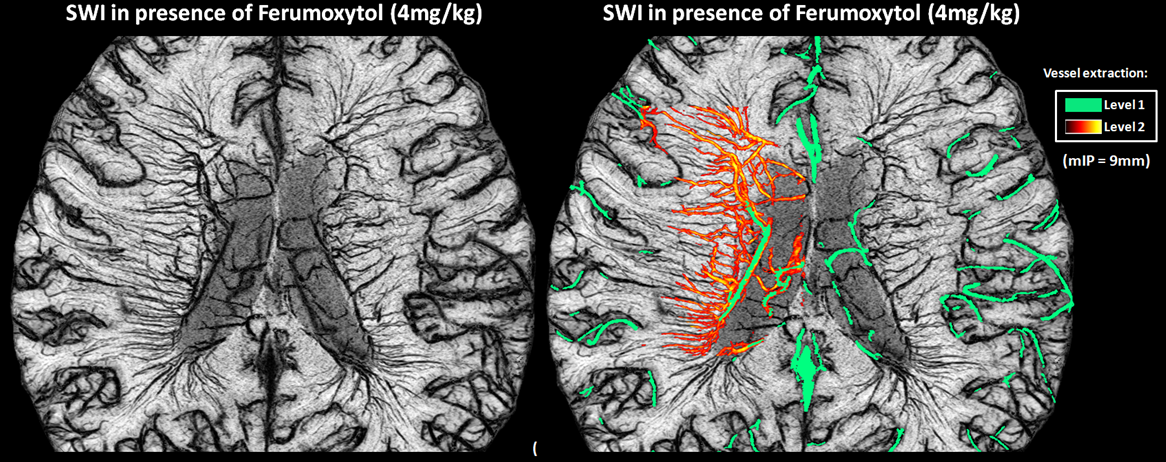“She was always a futurist,” Paul Silverman said of his mother, Roselyn, who died in 2018 at the age of 92. This outlook translated through all aspects of her life, from her twenty-plus years as an economic statistician for the New York City Budget Bureau to her hobbies in publishing science fiction and investing in pharmaceutical stocks. As Roselyn gained momentum, so did her legacy, which grew to include a nearly million-dollar gift to support traumatic brain injury research at the Wayne State University School of Medicine.
Roselyn (née Silbur) Silverman was born Oct. 3, 1925, in Baltimore. Her mother, a divorcée, worked as a pharmacist during a time when a man had to be hired to "front" the business. In the wake of the Great Depression, Roselyn and her mother left Baltimore to be with family in Brooklyn. Roselyn was highly focused on

education from a young age. She studied at Hunter College in New York City, and amid the outbreak of WWII started classes at George Washington University in Washington, D.C. By the end of the war in 1945, Roselyn was back in New York at Columbia University, working toward her master’s degree in Economics. She found time to stay active with friends, and it didn’t take long before she met her husband during a group hike along the Hudson River. They married in 1949.
A materials engineer who specialized in metallurgy, Louis Silverman studied engineering at Wayne State University. The couple met while he worked for Raytheon, where he received multiple patents for the early techniques behind color television. As the technology grew, so too did the couple’s family. They imparted the importance of education to their children, Carol, Deborah and Paul. It was Deborah who inspired Roselyn’s gift to the School of Medicine.
Deborah, who went by the nickname Debbie, was by all accounts brilliant. Paul remembers that she had the highest IQ in their childhood school system, information relayed to the family by a neighbor who served on the school board. She sped through her education, advancing by a grade level to eventually receive her master’s of business administration degree from the University of California, Los Angeles at age 22. She then went on to make deals in cable television as it spread throughout the rural United States.
“All these six-foot-tall guys in Kentucky, dealing with these California hot-shots like her coming in. She was tiny, only 4’11”, and would have to command a room wearing heels to get authority,” Paul said.
Years later, Debbie moved back to the Silverman family home, where she took up her childhood hobby of horseback riding, often with family and friends. About a week after one of these rides she slipped into a coma and didn't wake up for almost two months.
“They didn't know why it happened, she just went to sleep one day. They think it might have been encephalitis, but it didn't show up on any of the tests … . They treated for the coma and she woke up with brain damage from the inflammation related to the high fevers,” Paul explained. “They did CAT scans, but in the mid-’80s it was completely new. My mother agonized over taking her off the respirator, but she was able to breathe on her own and one day she started to get out of bed. She had to start over from scratch, learning everything … . My mother was outraged by the lack of treatment options, so she took Debbie out and brought her home.”
Roselyn was selfless in her care, retiring from her job to focus on Debbie’s rehabilitation. Debbie was an avid reader, and over time regained the reading equivalency of a high school student. Her emotional understanding, however, remained limited. In spite of this, Roselyn and the rest of the family kept Debbie’s life full until her death in 2017.
To save for their children’s educational expenses, Roselyn had set aside money from her hobby of investing in pharmaceutical stocks, many of which she chose through analyzing her husband’s technical magazines. Debbie’s unexpected change in health inspired Roselyn’s decision to dedicate her inheritance to help those impacted by similar trauma. Paul said his father, Louis, “took the alumni thing seriously” at Wayne State University. “I genuinely think my mother got the idea to put it in her estate from his alumni magazines, though I couldn’t swear by it.”

For E. Mark Haacke, Ph.D., professor of Radiology, Roselyn Silverman’s gift is a guarantee for the future of his research in the microvascular study of traumatic brain injury, or TBI. In addition to his work as director of the MR Research Facility at Wayne State University, he has more than 30 years of medical imaging experience applicable to the study of neurodegenerative diseases such as multiple sclerosis, dementia, Parkinson’s disease and TBI.
“We have a long history of looking at TBI at Wayne State, with research in both radiology and biomedical engineering. We’ve had grants from the National Institutes of Health, also with the Department of Defense; it’s been an area of interest for some time,” Dr. Haacke said.
Some of the research tied to these grants includes the study of cerebral microbleeds, vascular damage and diffuse axonal injury. Dr. Haacke and his team have developed a technique called MICRO imaging that is able to examine the smallest of blood vessels in the brain outside the capillaries. At 50 to100 microns, the vessels are similar in size to the thickness of a human hair. This novel capability opens many new doors to understanding the brain's vasculature system. With his most recent finds on multiple sclerosis cases, he said, “it's pretty amazing what we've discovered so far, vascular effects that no one has yet characterized in this disease, and we're hoping that we can do the same thing for patients with traumatic brain injury.”
The largest impact Roselyn Silverman's gift has created is the opportunity for Dr. Haacke to plan for the next three to four years ahead in his research. He has been able to bring on board a key neurologist with experience in studying patient cases of chronic mild TBI.
“Most mild TBI cases recover, but there are a certain number of patients where we can see white matter hyperintensities representing inflammation and damage to

the tissue to the brain, and some that also have cerebral microbleeds, and these patients still have problems long after their trauma,” Dr. Haacke said. “And the question is, why don't they fully recover? To be honest, we don't think anyone has done this research yet, looking at the vasculature of those patients with white matter damage and microbleeds. If they have both of these findings, the odds are that we are going to discover more about the damage with MICRO imaging and then better understand the problems they're having. Our goal is to use MR imaging to study damage to the microvasculature of the brain and show that using this new technology we could correlate what we see with the patient's condition.”
Paul shares Dr. Haacke's excitement. “The technology is amazing. It seems like quite a leap forward, and is clearly cutting-edge!”
Through careful estate planning, Roselyn left a longevity of funding for Dr. Haacke's TBI research. In turn, the School of Medicine will be a proud steward of the legacy left by Roselyn and Debbie, striving for a world in which the brain is more easily understood, diagnosed and treated. To learn more about how to make a similar gift, contact Lori Robitaille at 313-993-4070 or lrobitai@med.wayne.edu.